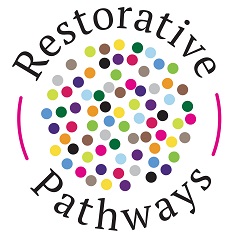Finding Benefit from Pandemic School Closures

Challenging life experiences do have the potential to facilitate positive change, in fact, it is through challenging experiences that we are able to build resilience. In the midst of a pandemic though, it can be difficult to find the positives. However, recent research on Australian adolescents revealed many students have demonstrated positive growth upon return to school following lockdown induced school closures (Waters, Allen & Arslan, 2021).
Stress-related growth is defined as the “perception or experience of deriving benefits from encountering stressful circumstances” (Vaughn et al., 2009, p. 131). Importantly, SRG goes beyond recovering from the adversity to include ongoing adaptability, finding greater meaning, broadened perspectives, and the development of lasting personal resources such as higher levels of stress tolerance to future adversity.
The study by Waters, Allen and Arslan (2021) revealed three coping skills significantly predicted the growth students reported during COVID-19: positive reappraisal, emotional processing and strengths use. Interestingly, these indicators also align with the SEARCH Developmental Relationship Framework elements of Challenge Growth & Expand Possibilities. When we challenge growth in relationship with our students, we focus on stretching their capabilities, helping them to be accountable, and recover from setbacks. When we expand student possibilities in relationship, we expose them to new ideas and help them see future possibilities.
While this study looked specifically at a school implementing these skills through a positive education program, the skills are generalisable and can be taught in any school setting as the following suggestions explore.
Positive Reappraisal as a Coping Skill
Positive reappraisal is not about ‘wearing rose coloured glasses’, or ‘toxic positivity’. It is “a meaning-based, adaptive cognitive process that motivates an individual to consider whether a good outcome can emerge from a stressful experience” (Waters, Allen & Arslan, 2021, p.3). It is an intentional activity whereby individuals think deeply about the adverse event and the benefits it could bring especially in the context of one’s values and beliefs. For example, ‘I am lonely and bored learning from home, but I am developing confidence in my ability to complete tasks independently’.
Circle work and being a positive detective are activities that can be used in schools to help students develop the coping capability of positive reappraisal.
Circle Work
Conduct regular circle check-ins with students, this doesn’t have to take long, just long enough to gauge what emotional/psychological state they may be in. Ask them not simply how they are feeling, but how they are responding to their feelings, and the actions they are taking when they feel that way.
Ask students to indicate (raise hand, cross the floor) if they felt – disengaged/frustrated/lethargic/insert unpleasant emotion – in the past week. Then invite students to pair up and share one positive thing school closures/the pandemic has resulted in. For a free guide to facilitating classroom circles, go to www.restorativepathways.com.au
Humans are hardwired to look for threats and to process them with a higher level of importance over our positive experiences. To look for, and savour, the positive takes more effort and practice but we can intentionally form new habits to do this.
Challenge yourself to take 5 positive photos each day for a week and share them with a loved one or friend. Be sure to talk about what it is that caught your attention and how you feel when you look at it.
You could go one step further and upload them to www.seeinghappy.org a website set up by Mandy Seligman (wife to renowned positive psychology expert Martin Seligman) during the pandemic to encourage and remind us to look for and savour our positive emotions and experiences.
Emotional Processing as a Coping Skill
Individuals process emotions differently and how well we do this can impact on our psychological and physical health, both in the moment and during times of future adversity.
Emotional processing is described as the technique of attempting to actively express, acknowledge and understand your emotions during times of stress (in contrast to avoidance; Stanton et al., 2000).
The degree to which adolescents identified, validated, and expressed, their emotions was a significant predictor of stress related growth when returning to school after pandemic school closures (Waters, Allen & Arslan, 2021). This indicates that students need to develop the capability of emotional processing and be afforded the opportunity to do so at school, especially when the stressor relates directly to that environment.
Mindful emotional awareness and musical emotions are two activities that can be used in schools to help students develop the coping capability of emotional processing.
Mindful Emotional Awareness
Being able to process your emotions requires you to be aware of them in the first place, not simply aware you are feeling something, but being able to label the experience adequately and noticing how that emotion is experienced within your whole body and mind. Mindfulness practices can help us to develop this skill. Try the following exercise yourself, or if you prefer something more structured, head here to listen to an audio guide by self-compassion expert Dr. Kristen Neff.
Sit quietly in a comfortable position. Allow yourself a few minutes to quieten, & calm. Shift your awareness to your feelings & emotions. Choose just one to focus on for now. Ask yourself these questions:
- Which part of your body is holding this feeling?
- How big or small is it? How heavy or light?
- Are the edges hard or soft?
- Describe the colour of this feeling?
- If you could touch it, what would it feel like?
- What label would you give it?
Continue to observe the feeling for a few minutes until you feel you understand it better. When you’re ready, bring your attention back to the room. Take a few minutes to reflect on this experience in your own way.
Musical Emotions
This activity combines a feeling wheel resource (other examples can be found with a quick online search) and music. Select 5-10 emotion words from the wheel, match each emotion to at least one song you would choose to listen to when you are experiencing that emotion. Go a step further and compare your list to the list of a friend or loved one. Are they similar or different? Why might that be the case?
Next time you become aware of your emotions, choose to play a song from your emotions playlist and reflect on what impact that has on how you process the experience.
Strengths Use as a Coping Skill
Character strengths are the positive parts of your personality that impact how you think, feel, and behave (VIA Institute on Character, 2021), and are experienced as energizing and authentic to the individual (Peterson & Seligman, 2004). Importantly, having strengths, being aware of them and using them contributes to higher levels of psychological wellbeing (Park et al., 2004).
Strengths use simply refers to the intentional act of translating individual strengths into actions in a variety of ways in different settings (Govindji & Linley (2007). For tips on how you can be more intentional with your strengths in general, head here.
Designing a strengths use plan and strengths gifting are two activities that can be used in schools to help students develop the coping capability of strengths use.
Strengths Plan
Choose 3 strengths you enjoy using and write down at least one way to use them intentionally throughout the day. For example, use curiosity to conduct an experiment, use hope and explore hope in music, or use humour and share a great joke with someone. Place your plan somewhere visible and check it off as you go. At the end of the day, take a moment to think about how it went.
- How many times did you use your strengths?
- How did it feel when you used them?
- Did it make a difference to your day compared to other days? How?
Strengths Gifting
Choose one of your strengths and list all the ways you could use this strength to benefit others. Challenge yourself to gift your strength as many times as you can throughout the day to as many different people as you can. For example, creativity can be gifted as a poem to someone, forgiveness can be gifted to someone who wronged you, zest can be gifted to encourage people to keep going. At the end of the day, take a moment to think about how it went.
- How many times were you of benefit to others?
- What reactions did you get from those who received your gift? How did that make you feel?
Reflection
What other activities might also help students develop these coping capabilities?
What have you observed from your students that may indicate stress-related growth?
How might developing these coping capabilities not only support student growth, but also impact their relationships?
References
Govindji, R., and Linley, A. (2007). Strengths use, self-concordance and wellbeing: implications for strengths coaching and coaching psychologists. Int. Coach. Psychol. Rev. 2, 143–153.
Park, N., Peterson, C., and Seligman, M. E. (2004). Strengths of character and well-being. J. Soc. Clin. Psychol. 23, 603–619.
Peterson, C., and Seligman, M. E. P. (2004). Character Strengths and Virtues: A Handbook and Classification. Washington, DC and New York: Oxford University Press and American Psychological Association.
Stanton, A. L., Kirk, S. B., Cameron, C. L., and Danoff-Burg, S. (2000). Coping through emotional approach: scale construction and validation. J. Pers. Soc. Psychol. 78, 1150–1169.
Vaughn, A. A., Roesch, S. C., and Aldridge, A. A. (2009). Stress-related growth in racial/ethnic minority adolescents: measurement structure and validity. Educ. Psychol. Meas. 69, 131–145.
Waters L, Allen K-A and Arslan G (2021) Stress-Related Growth in Adolescents Returning to School After COVID-19 School Closure. Front. Psychol. 12:643443.

Add A Comment